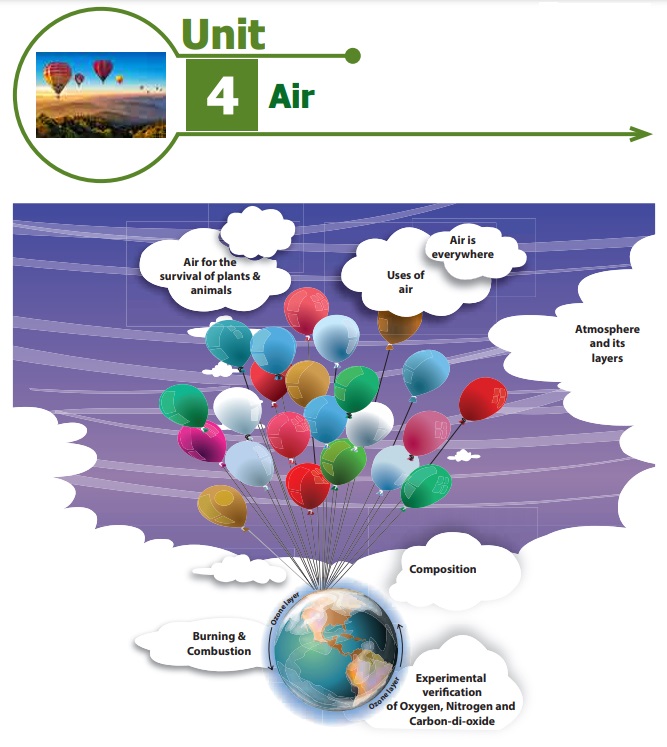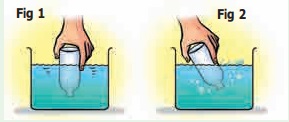Term 2 Unit 4 | 6th Science - Air | 6th Science : Term 2 Unit 4 : Air
Chapter: 6th Science : Term 2 Unit 4 : Air
Air
Unit 4
Air

Learning Objectives
* To identify the components and uses of air
* To develop skills in performing experiments and arriving at conclusions
* To clarify the role of oxygen in the process of burning
* To realize the significance of air for the survival of plants and animals on earth
* To appreciate the need of air in protecting our atmosphere
Introduction
Air is present everywhere around us. We cannot see air. But we can feel its presence in so many ways. For example, we feel air when the trees rustle, clothes hanging on a clothes-line sway, pages of an open book flutters when the fan is switched on, when kites fly in the sky. We cannot see, touch or taste air but we can feel it. It is the air that makes all these movements possible. Thus, we can understand that air is present all around us.
Air is necessary for us to live. We can live without food for some days, without water for a few hours, but cannot survive without air for more than a few minutes. So, air is very important for all living beings to survive.
When air is moving it is called wind. It is cool and soothing as breeze. When air moves with force it can even uproot trees and blow off the roof tops. Air is necessary for breathing and also for combustion. Shall we do an activity?
Activity 1: Air is everywhere
Let us take an empty glass bottle. Is it really empty or does it have something inside?
Now, shall we turn the glass bottle upside down? Can you agree that there is still something inside the empty glass bottle? Let us do the following activity to find what is there inside an empty glass bottle.

Dip the open mouth of the bottle into the trough filled with water as shown in Fig 1. Observe the bottle. Does water enter the bottle?
Now tilt the bottle slightly. Now again dip the open mouth of the bottle as shown in Fig 2. Do you think that water will enter the bottle?
Kindly observe the Fig 2 carefully. You can see bubbles coming out of the bottle.
When you perform the experiment, can you hear the bubbly sound? can you nowguess what was inside the bottle?
Yes, you are right. It is “air” that was present in the bottle.
The bottle was not empty at all. In fact, it was filled completely with air even when you turned it upside down. That is why we notice that water does not enter the bottle when it is pushed in an inverted position, as there was no space for air to escape.
When the bottle was tilted, the air was able to come out in the form of bubbles, and water filled up the empty space that the air has occupied.
Hence we can see that air fills all the space inside the bottle.

USE OF AIR

Related Topics